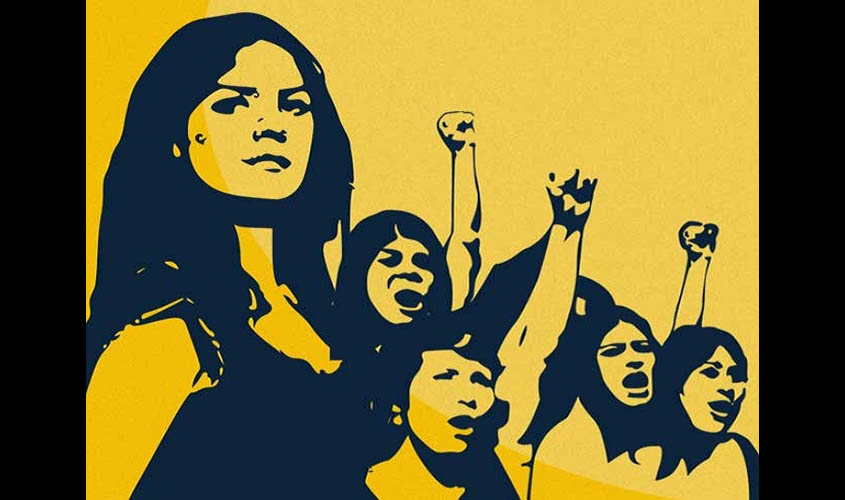- Women have broken the glass ceiling of patriarchy in various sectors; however, they still face significant barriers to political participation in India
- It is time to acknowledge the systematic exclusion of women from politics and demand action for creating a more equitable political landscape
Role of women
- Women played a crucial role in India’s fight for independence, by organising demonstrations, leading rallies, and raising awareness
- Just a decade ago, three of India’s largest States, West Bengal, Tamil Nadu, and Uttar Pradesh, were in the spotlight for being led by women Chief Ministers
Dilemma of reservation in politics
- The idea of reservation can be traced back to 1955 when a government appointed committee recommended that 10% of seats in the Lok Sabha and State legislative assemblies should be reserved for women.
- The National Perspective Plan for Women (1988) recommended that 30% of seats in all elected bodies should be reserved for women.
- In 1993, the Panchayati Raj Act was amended to reserve 33% of all seats in local government bodies for women, which was a significant step towards women’s political empowerment.
- The success of this reservation led to demands for similar reservations in other elected bodies; in 1996, the Women’s Reservation Bill was introduced in the Lok Sabha
SOCIOLOGICAL PERSPECTIVE ON EMPOWERING WOMEN
- empowerment implies motivating an individual. Women’s liberation has been frequently addressed and analyzed internationally. Sociologist said rightly that empowering women requires making them economically stable and autonomous, and in order to meet any challenging circumstance, they can have strong self-esteem
- Women have come a long way in Indian culture as they have been worshipped as goddesses and harassed — gravely incidents of domestic abuse, acid attacks and rapes.
- The suffering of Indian women and girls has grown slowly through the years. Indian violence, shortage of jobs, public health and protection are some of the main problems.
While the Indian Constitution gives women equal dignity and human rights some civil and legal protections, some specific laws were enacted to enhance women’s equal status mechanism. That involve unique projects
Establishment of a National Women’s Committee: which is a legislative entity to oversee and research issues pertaining to the political and legal protections given to women. Unique laws must be implemented by the government on all legal and social levels for women.
- allocate women’s seats in local self-government by guaranteeing one third of all women’s seats in metropolitan as well as rural areas.
- the Child’s National
- Action Plan to ensure girls’ safety, security and growth.
- the National Women’s Strategy, with the aim of supporting and improving women’s empowerment in India.
CHALLENGES
- The women empowerment mechanism in India is governed by many restrictions. In developed countries including India, gender expectations and family roles reflect and maintain women’s inferior role.
- One law is that a son is constantly favored over the birth of a girl who actually exists in nearly every culture and group.
- In terms of schooling, healthcare and other resources, culture is more segregated in favor of males. It is the assumption that male children inherit the Indian clan with the exception of Meghalaya that is the underlying source of this form of stance.
- Women also internalize their stereotypical position as natural, thus causing oppression. For the vast majority of women in India, hardship is the fact of life. It is still a struggle to gain women’s equality.
Follow us :
-
https://www.instagram.com/triumphias
https://www.youtube.com/c/TriumphIAS
https://t.me/VikashRanjanSociology
Find More Blogs
Scope of the subject and comparison with other social sciences
Changing family structure in India Modernity and social changes in Europe
Same-Sex Marriage, Marriage Equality, Sociological Perspective, Social Functions of Marriage, Family and Kinship, Supreme Court of India, Special Marriage Act, Petitions, Center, Parliament, Division of Labor, Expressive Role, Task Role, Stability, Dysfunction, Government, Legal System.#Sociologyforupsc #sociologyforupscinhindi #sociologyforupscgs1 #sociologyforupscprelims #sociologyforupscinenglish #sociologyforupscmainsinhindi #sociologyforupscoptionalinhindi #sociologyforupscmains #sociologyforupscplaylist #sociologyforupsclecture1 #sociologyforupsccse #sociologyforupscoptional #syllabusofsociologyforupscoptional #bestbookforsociologyforupsc #sociologyoptionalforupscanswerwriting #sociologyoptionalforupscanukumari #sociologyoptionalforupscabhijeet #sociologyoptionalforupscanalysis #sociologyoptionalforupscalllectures #sociologysyllabusforupscanalysis


